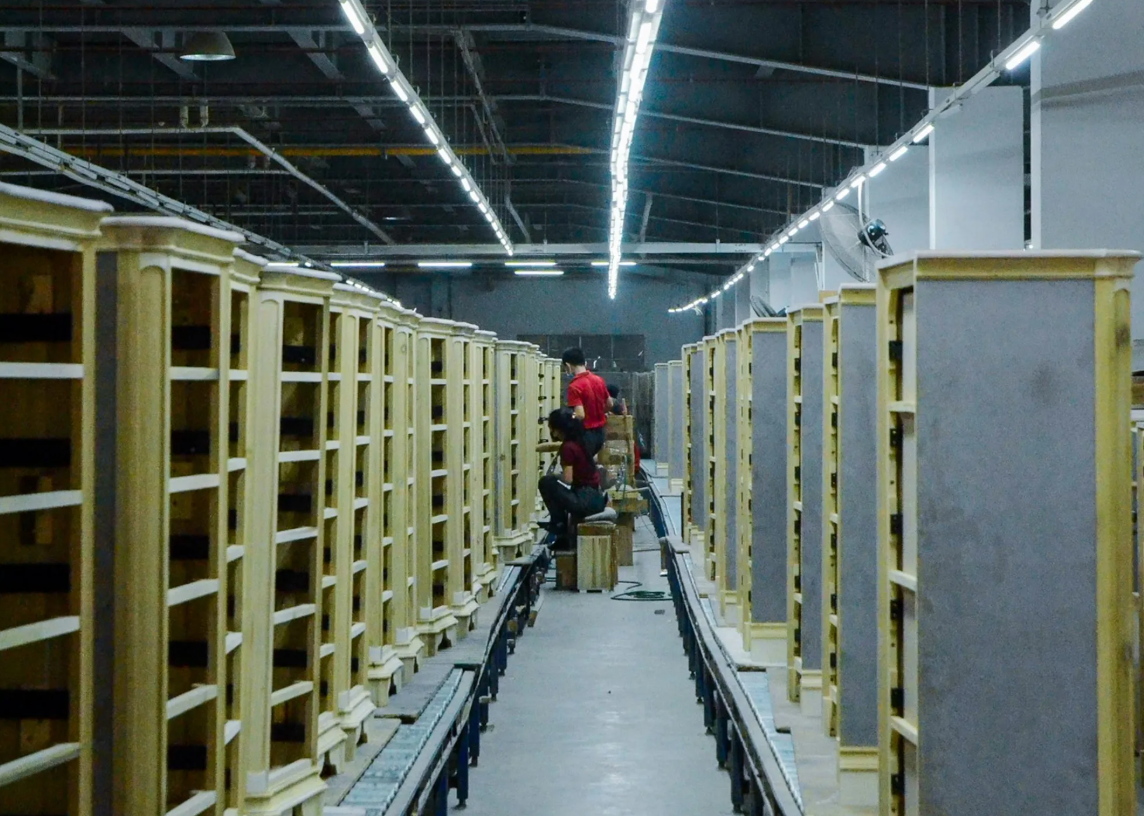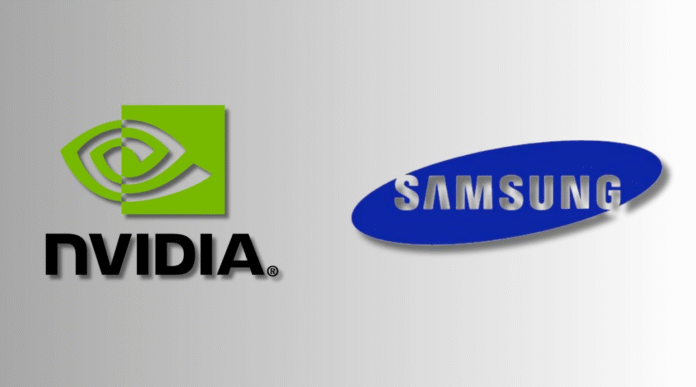Samsung Nvidia AI Megafactory: The Future of Chipmaking Begins
The Samsung Nvidia AI Megafactory is setting the stage for a revolution in semiconductor manufacturing. In one of the boldest collaborations of the decade, Samsung Electronics and Nvidia are joining forces to create an advanced “AI Megafactory”, powered by more than 50,000 Nvidia GPUs.
This ambitious project isn’t just another industrial upgrade. It represents the dawn of intelligent manufacturing, where factories will not only automate tasks but also think, predict, and optimize production in real time using artificial intelligence.

A Partnership Rooted in Innovation
This collaboration is not entirely new, it’s a continuation of a long-standing partnership between two global tech giants. Decades ago, Samsung’s DRAM chips powered Nvidia’s early graphics cards. Today, that relationship has evolved into something far more transformative.
With the Samsung Nvidia AI Megafactory, Samsung aims to embed AI across its entire manufacturing process, from chip design and lithography to quality assurance and equipment management. The vision is to build a self-learning, adaptive production ecosystem capable of continuously improving itself through data and simulation.
How Nvidia’s Technology Powers Samsung’s Vision
To achieve this, Samsung is using Nvidia’s cuLitho and CUDA-X libraries to boost its optical proximity correction (OPC) processes, the crucial step in ensuring precise semiconductor patterning. The results are already remarkable:
-
A 20x performance increase in computational lithography
-
Faster detection and correction of circuit pattern variations
-
Dramatically shorter chip development cycles
By leveraging Nvidia’s AI software ecosystem, Samsung can now produce higher-quality chips faster and more efficiently than ever before.
Digital Twins: Simulating the Factory of the Future
One of the most exciting aspects of the Samsung Nvidia AI Megafactory is its use of Nvidia Omniverse, a virtual simulation platform that enables engineers to create digital twins of real-world fabrication facilities.
Through these digital twins, Samsung engineers can:
-
Simulate the production environment virtually
-
Detect inefficiencies before they happen
-
Test new methods safely before applying them on the factory floor
This approach reduces downtime, minimizes waste, and speeds up innovation, a crucial advantage in the hyper-competitive semiconductor industry.
AI Megafactory Goals: Beyond Chips
The Samsung Nvidia AI Megafactory isn’t limited to semiconductor production. It will also play a key role in creating next-generation:
-
Mobile devices
-
AI-powered robotics
-
Smart manufacturing systems
Samsung plans to expand this AI-powered infrastructure across its global manufacturing network, including the massive Taylor, Texas facility. The 50,000 Nvidia GPUs won’t just handle production, they’ll also train Samsung’s in-house AI models, which already operate on over 400 million devices worldwide.
This integration ensures that Samsung’s entire ecosystem, from smartphones to smart factories, evolves intelligently, adapting to data in real time.
Nvidia’s Jetson Thor: The Brains of Automation
The partnership also integrates Nvidia’s Jetson Thor robotic platform, designed for high-performance edge computing. These AI-driven robots can collaborate with human workers, enhancing efficiency, safety, and precision on the manufacturing line.
With Jetson Thor, Samsung’s factories will move closer to fully autonomous operations, where machines learn from every production cycle and continuously optimize themselves.
Mutual Benefits: A Perfect Synergy
The Samsung Nvidia AI Megafactory isn’t just beneficial for Samsung, it’s a strategic win for Nvidia too. Samsung is one of the world’s largest producers of high-bandwidth memory (HBM), a critical component in Nvidia’s GPUs.
Both companies are co-developing Samsung’s fourth-generation HBM4 memory, expected to reach speeds of up to 11 gigabits per second, setting a new benchmark for data transfer in AI computing.
This collaboration deepens their interdependence, Samsung provides the memory that powers Nvidia’s GPUs, and Nvidia delivers the AI technology that powers Samsung’s factories.
Rival Giants Enter the Arena
The global AI hardware race is heating up fast. Nvidia recently announced a $500 billion order book for its new Blackwell GPU generation, signaling explosive demand for AI chips.
Meanwhile, South Korean giants like SK Group and Hyundai are also building massive GPU clusters to compete. The real competition, however, is shifting, it’s no longer about who can make the fastest chip, but who can build the smartest factory.
The Samsung Nvidia AI Megafactory positions both companies at the forefront of this new industrial revolution.
The Rise of AI-Native Manufacturing
In the past, factories relied on automation to perform repetitive tasks. Today, the next step is AI-native manufacturing, systems capable of self-diagnosis, real-time optimization, and autonomous decision-making.
Through this initiative, Samsung is transforming its manufacturing operations into an AI-driven, self-improving network. The Samsung Nvidia AI Megafactory will serve as a blueprint for the future of industrial production, where human creativity and machine intelligence work side by side.

What This Means for the Future
The global implications of the Samsung Nvidia AI Megafactory extend far beyond chipmaking. It symbolizes the merging of AI, robotics, and manufacturing, blurring the line between digital and physical industries.
As other tech companies race to integrate similar systems, this partnership could set a standard for how factories think, adapt, and evolve. The winners in this new era won’t just be those who produce faster, but those who learn faster.
The message is clear: in the age of AI, intelligence isn’t just in the chips, it’s in the factories that make them.

